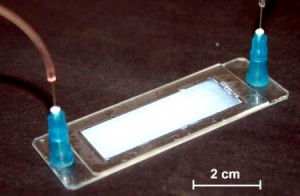High energy costs are one drawback of making clean water from waste effluents. According to an article in the journal Biomicrofluidics, which is published by the American Institute of Physics, a new system that combines two different technologies proposes to break down contaminants using the cheapest possible energy source, sunlight. Microfluidics — transporting water through tiny channels — and photocatalysis — using light to break down impurities — come together in the science of optofluidics.
“These two technologies have been developed in parallel but there have been few efforts to employ the natural synergy between them,” says author Xuming Zhang of the Hong Kong Polytechnic University. “Our results showed a dramatic improvement in the efficiency of the photocatalyst.” Read more


